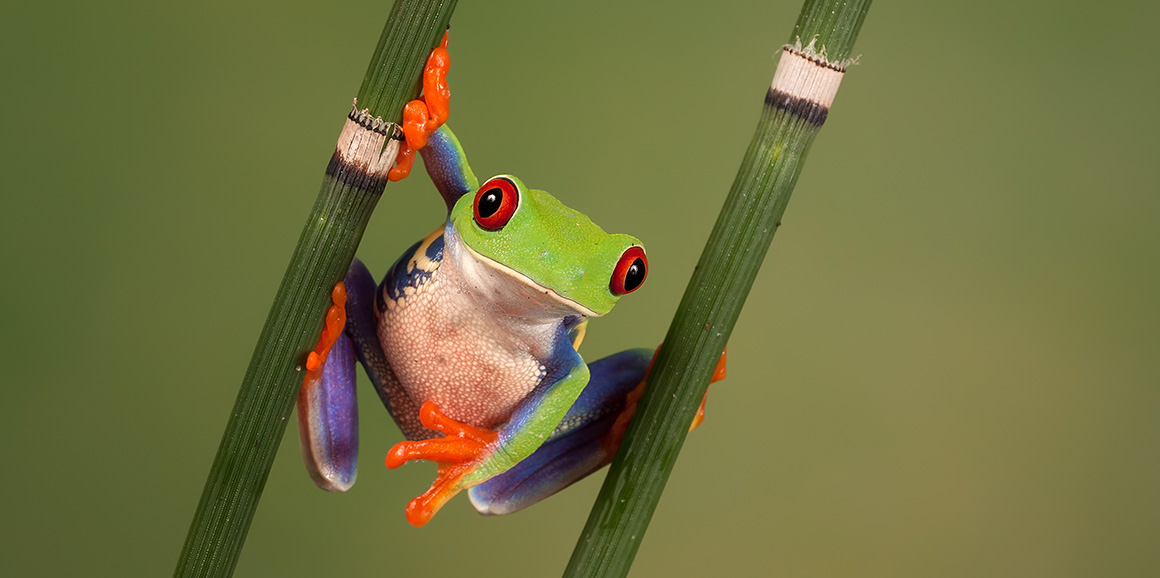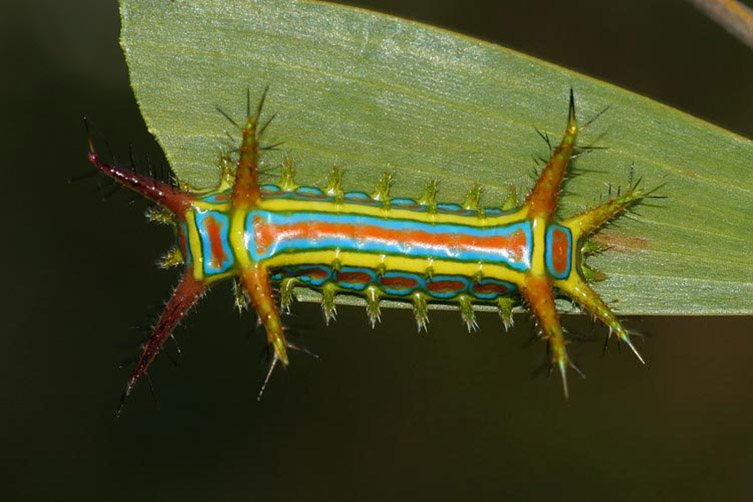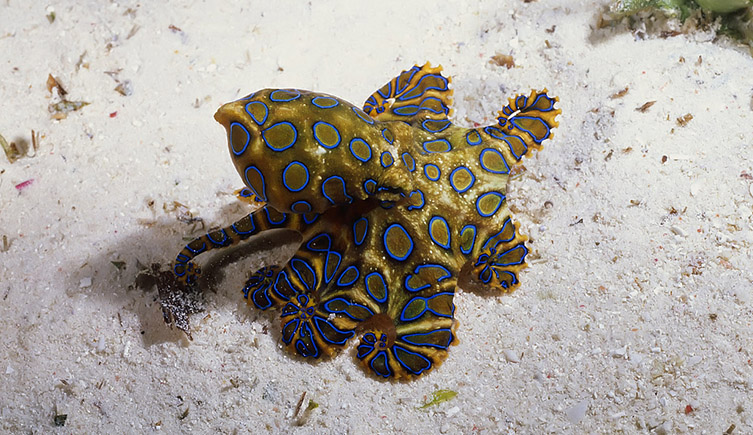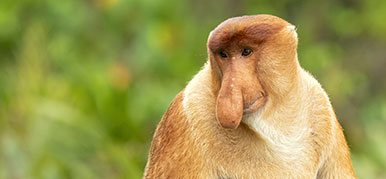Colour: it is a method of finding a mate, a cue that danger is near, a vital clue in the search for food.
Meet some of the brightest and boldest organisms created by evolution.

Animals use colour to find food, look for mates and stay safe. Red-eyed tree frog © Peter Reijners/Shutterstock.com
Colour: it is a method of finding a mate, a cue that danger is near, a vital clue in the search for food.
Meet some of the brightest and boldest organisms created by evolution.
The natural world is an endless medley of hues - and each ones tells a story.

Top-ranking male mandrills are the most colourful © DibaniMedia/Shutterstock.com
Bright scarlet snouts coupled with blue and white cheeks make the mandrill a contender for the most colourful mammal around.
The monkeys, native to equatorial Africa, match their behinds to their faces, with vivid blue, red and violet skin on their rear end as well.
The look is completed with a yellow beard, and the rest of the body is brown.
Mandrills live in groups containing several females and young, led by a dominant male. These groups can come together to form hordes, with hundreds of individuals.
Sexual selection is the cause of the mandrill's colourful outfit: the most successful males are the biggest and most colourful of the pack.
The tones are produced by testosterone, and the males become more colourful as they age, with the highest ranking in the group bearing the brightest faces.

The psychedelic colours of the wattle-cup caterpillar warn potential attackers to steer clear © Ian McMillan, licensed under CC BY-NC 2.0
They might look like they are enveloped in sweet wrappers, but potential predators ignore this colourful warning at their peril.
With acid yellow bodies covered in protruding spikes, called tubercles, the caterpillar can deliver a puncture three times as painful as a bee sting.
Native to Australia, they only wear their colourful outfits for a few weeks. After pupating, the caterpillar transforms into a dull brown moth.

The peacock mantis shrimp glows with colour in its tropical ocean home © zaferkizilkaya/Shutterstock.com
One of the most impressive creatures in the ocean, every centimetre of the peacock mantis shrimp radiates colour.
Sporting green, blue, pink and yellow, the mantis shrimp hides its startling colour in rocky crevices under tropical oceans.
A relative of lobsters, this crustacean is able to see a far wider range of colours than humans can.
Mantis shrimps can detect UV light, and have 16 photoreceptors, compared to the three colour-detecting receptors humans have: green, blue and red. Our three photoreceptors reveal a rainbow to us - but we can't begin to imagine the world of colour that mantis shrimps live in.

Greater earless lizards use colour in many ways © Patrick Alexander/BLM New Mexico, licensed under CC BY-NC-ND 2.0
For this lizard, bright colour is a courtship tactic. During mating season, the skin of the males turns red, blue, green and yellow.
Between three and seven centimetres long, they are normally a sandy grey colour to blend in with their rocky habitats in Texas, New Mexico and Arizona.
Females also develop bright colours, typically pink or orange, during the breeding season.
This reptile uses colour in multiple ways. The lizard's tail is decorated with black and white rings, and it waves it like a flag to ward off potential predators - a tactic that can save the creature's life.
The tail can break off from the body in an attack and be regenerated later on. Predators grab the tail, but fail to keep hold of the escaping lizard.

The blue-ringed octopus: potent enough to kill a human © Angell Williams, licensed under CC BY 2.0
As well as being one of the most brightly coloured creatures in the sea, this tiny octopus is also one of the most deadly species in the world.
Their venom lurks in their saliva, and it is potent enough to kill an adult human. Its bright blue rings flash a warning when a predator approaches.
Just 12 to 20 centimetres long, they spend most of their time hiding inside crevices in the rock pools and coral reefs of the Pacific and Indian Oceans.

Gouldian finches have either red, yellow or black faces © Juan Aunion/Shutterstock.com
Adult male Gouldian finches are unmistakable, squeezing bright blue, green, yellow and purple onto their small bodies.
They are one of Australia's most colourful birds, finishing their look with blue tails. Their face colour varies.
Gouldian finches live in open, tropical woodland, and nest in tree hollows.
The species was classified as endangered in Queensland in 1992 by the International Union for Conservation of Nature, and still faces threats to its habitat from livestock grazing and fire management strategies.
After conservation efforts, numbers are rising, although there are still fewer than 2,500 mature birds in the wild.

The Mandarin fish is native to the Pacific Ocean © Dobermaraner/Shutterstock.com
Dominated by blue with orange, red or yellow wavy lines, the Mandarin fish is native to the Pacific Ocean.
Its blue colour is caused by chromatophores, light-reflecting cells that also contain pigments.
Chromatophores are found in a wide range of amphibians, fishes, reptiles, crustaceans and cephalopods.
But the Mandarin fish is one of just two species in the animal kingdom where blue colouration is known to be caused in this way. The other one is a closely related species, Synchiropus picturatus.

Male peacock spiders perform an elaborate dance to impress mates © Jurgen Otto, licensed under CC BY-NC-ND 2.0
Glittering blues, greens, oranges and yellows shine from the small body of the peacock spider.
Dozens of species of peacock spider are known, and it is likely that there are still more to be found.
The bright colours are part of their strategy to impress potential mates. Males flash their colourful bodies and perform an elaborate dance in the hope of winning a female, strutting back and forth and waving their legs.
It is a bold undertaking that can go horribly wrong: if the females remain unimpressed, they eat their potential suitor.

The red-eyed tree frog flashes its eyes at predators © Ondrej Prosicky/Shutterstock.com
While the tree frog sleeps during the day, it is able to hide its markings and red eyes.
Appearing mostly green, it blends in with the leaves of its rainforest home.
When disturbed from sleep, the tree frog flashes its bulging red eyes, startling any predators that were about to eat it.
Adults are neon green, with white bellies, and blue upper limbs with cream or yellow stripes on their sides. They complete the look with orange feet.

Just how weird can the natural world be?
Don't miss a thing
Receive email updates about our news, science, exhibitions, events, products, services and fundraising activities. We may occasionally include third-party content from our corporate partners and other museums. We will not share your personal details with these third parties. You must be over the age of 13. Privacy notice.
Follow us on social media